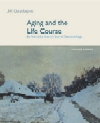1. What are the voting patterns and preferences of older Americans?
Older people have the potential to exert a significant influence on any election
since they comprise a disproportionate share of the electorate. However, there
is no evidence that they engage in bloc voting. Often older people have supported
candidates or parties that have enacted proposals against their interests. In
general, there are few age differences in political preferences. Young and old
have similar attitudes toward public spending and similar preferences for presidential
candidates. An exception was the 1992 presidential election in which older voters
were less likely to vote for Ross Perot, a reflection of the skepticism older
people have regarding the effectiveness of third party candidates. 2. What are the major interest groups that represent older Americans,
and what have they accomplished?
The American Association of Retired Persons is the largest organization of older
people in the United States. Other important organizations include the National
Council of Senior Citizens, the National Committee to Preserve Social Security
and Medicare, and the National Association of Retired Federal Employees. Despite
the presence of many large organizations representing the interests of older
people, it is important not to overestimate their political power. Larger organizations,
such as AARP, find it difficult to take a position on any issue, because their
members are so diverse. Often the old-age organizations disagree with each other.
The greatest accomplishment of these interest groups has been in protecting
Social Security and Medicare. 3. What social movements have older Americans participated in?
Although older people are the least likely age group to participate in a political
demonstration, there have been two occasions in this century when they have
felt strongly enough about an issue to become involved in a social movement.
The first social movement primarily composed of older people was the Townsend
movement. Townsendites lobbied Congress for a national old age pension. Many
observers believe that their influence hastened passage of the Social Security
Act of 1935. The Medicare Catastrophic Coverage Act of 1988 generated an exceptional
kind of protest politics by the elderly because they felt they were being taxed
unfairly and because it did not provide the one benefit they needed most-help
with the costs of nursing home care. 4. What concepts have been used in debates about government spending
on the aged?
Until recently the aged have been considered deserving recipients of social
benefits. As improvements in Social Security benefits raised the living standards
of the retired, some people began to claim that the elderly were receiving an
unfair share of societal resources, especially compared to what children receive.
This is the central idea behind the notion of generational equity. Generational
equity is primarily an American idea that has had little influence in other
countries in debates about government spending. Another concept that is widely
used is that there is an entitlement crisis. The notion of an entitlement crisis
consists of two themes. The first is that expenditures on the aged are usurping
an unfair share of federal resources. The second is that current trends cannot
be sustained in the future when the baby boom generation begins to retire. | 


 2002 McGraw-Hill Higher Education
2002 McGraw-Hill Higher Education